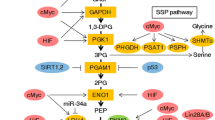Abstract
Tumor cells favor abnormal energy production via aerobic glycolysis and show resistance to apoptosis, suggesting the involvement of mitochondrial dysfunction. The differences between normal and cancer cells in their energy metabolism provide a biochemical basis for developing new therapeutic strategies. The energy blocker 3-bromopyruvate (3BP) can eradicate liver cancer in animals without associated toxicity, and is a potent anticancer towards glioblastoma cells. Since mitochondria are 3BP targets, in this work the effects of 3BP on the bioenergetics of normal rat brain mitochondria were investigated in vitro, in comparison with the anticancer agent lonidamine (LND). Whereas LND impaired oxygen consumption dependent on any complex of the respiratory chain, 3BP was inhibitory to malate/pyruvate and succinate (Complexes I and II), but preserved respiration from glycerol-3-phosphate and ascorbate (Complex IV). Accordingly, although electron flow along the respiratory chain and ATP levels were decreased by 3BP in malate/pyruvate- and succinate-fed mitochondria, they were not significantly influenced from glycerol-3-phosphate- or ascorbate-fed mitochondria. LND produced a decrease in electron flow from all substrates tested. No ROS were produced from any substrate, with the exception of 3BP-induced H2O2 release from succinate, which suggests an antimycin-like action of 3BP as an inhibitor of Complex III. We can conclude that 3BP does not abolish completely respiration and ATP synthesis in brain mitochondria, and has a limited effect on ROS production, confirming that this drug may have limited harmful effects on normal cells.




Similar content being viewed by others
References
Burdakov D, Ashcroft FM (2002) Shedding new light on brain metabolism and glial function. J Physiol 544:334
Corsi G, Palazzo G (1976) 1-Halobenzyl-1H-indazole-3-carboxylic acids. A new class of antispermatogenic agents. J Med Chem 19:778–783
Davidescu M, Sciaccaluga M, Macchioni L, Angelini R, Lopalco P, Rambotti MG, Roberti R, Corcelli A, Castigli E, Corazzi L (2012) Bromopyruvate mediates autophagy and cardiolipin degradation to monolyso-cardiolipin in GL15 glioblastoma cells. J Bioenerg Biomembr 44:51–60
Dell’Antone P (2009) Targets of 3-bromopyruvate, a new, energy depleting, anticancer agent. Med Chem 5:491–496
Du F, Zhu XH, Zhang Y, Friedman M, Zhang N, Ugurbil K, Chen W (2008) Tightly coupled brain activity and cerebral ATP metabolic rate. Proc Natl Acad Sci USA 105:6409–6414
Floridi A, Paggi MG, D’Atri S, De Martino C, Marcante ML, Silvestrini B, Caputo A (1981) Effect of lonidamine on the enrgy metabolism of Ehrlich ascites tumor cells. Cancer Res 41:4661–4666
Geschwind JF, Ko YH, Torbenson MS, Magee C, Pedersen PL (2002) Novel therapy for liver cancer: direct intraarterial injection of a potent inhibitor of ATP production. Cancer Res 62:3909–3913
Ko YH, Pedersen PL, Geschwind JF (2001) Glucose catabolism in the rabbit VX2 tumor model for liver cancer: characterization and targeting hexokinase. Cancer Lett 173:83–91
Ko YH, Smith BL, Wang Y, Pomper MG, Rini DA, Torbenson MS, Hullihen J, Pedersen PL (2004) Advanced cancers: eradication in all cases using 3-bromopyruvate therapy to deplete ATP. Biochem Biophys Res Commun 324:269–275
Ko YH, Verhoeven HA, Lee MJ, Corbin DJ, Vogl TJ, Pedersen PL (2012) A translational study “case report” on the small molecule “energy blocker” 3-bromopyruvate (3BP) as a potent anticancer agent: from bench side to bedside. J Bioenerg Biomembr 44:163–170
Lai JC, Sheu KF, Carlson KC Jr (1985) Differences in some of the metabolic properties of mitochondria isolated from cerebral cortex and olfactory bulb of the rat. Brain Res 343:52–59
Liu Y, Fiskum G, Schubert D (2002) Generation of reactive oxygen species by the mitochondrial electron transport chain. J Neurochem 80:780–787
Macchioni L, Davidescu M, Sciaccaluga M, Marchetti MC, Migliorati G, Coaccioli S, Roberti R, Corazzi L, Castigli E (2011a) Mitochondrial dysfunction and effect of antiglycolytic bromopyruvic acid in GL15 glioblastoma cells. J Bioenerg Biomembr 43:507–518
Macchioni L, Davidescu M, Mannucci R, Francescangeli E, Nicoletti I, Roberti R, Corazzi L (2011b) H2O2 disposal in cardiolipin-enriched brain mitochondria is due to increased cytochrome c peroxidase activity. Biochim Biophys Acta 1811:203–208
Monni M, Corazzi L, Migliorati G, Roberti R (2000) Respiratory state and phosphatidylserine import in brain mitochondria in vitro. J Membr Biol 173:97–105
Pedersen PL (2007) Warburg, me and hexokinase 2: Multiple discoveries of key molecular events underlying one of cancer’s most common phenotypes, the “Warburg Effect”, i.e., elevated glycolysis in the presence of oxygen. J Bioenerg Biomembr 39:211–222
Pereira da Silva AP, El-Bacha T, Kyaw N, dos Santos RS, da-Silva WS, Almeida FCL, Da Poian AT, Galina A (2009) Inhibition of energy-producing pathways of HepG2 cells by 3-bromopyruvate. Biochem J 417:717–726
Ravagnan L, Marzo I, Costantini P, Susin SA, Zamzami N, Petit PX, Hirsch F, Goulbern M, Poupon MF, Miccoli L, Xie Z, Reed JC, Kroemer G (1999) Lonidamine triggers apoptosis via a direct, Bcl-2-inhibited effect on the mitochondrial permeability transition pore. Oncogene 18:2537–2546
Rodrigues-Ferreira C, da Silva AP, Galina A (2012) Effect of the antitumoral alkylating agent 3-bromopyruvate on mitochondrial respiration: role of mitochondrially bound hexokinase. J Bioenerg Biomembr 44:39–49
Rolfe DF, Brown GC (1997) Cellular energy utilization and molecular origin of standard metabolic rate in mammals. Physiol Rev 77:731–758
Schönfeld P, Reiser G (2006) Rotenone-like action of the branched-chain phytanic acid induces oxidative stress in mitochondria. J Biol Chem 281:7136–7142
Shoshan MC (2012) 3-Bromopyruvate: targets and outcomes. J Bioenerg Biomembr 44:7–15
Tretter L, Takacs K, Hegedus V, Adam-Vizi V (2007) Characteristics of alfa-glycerophosphate-evoked H2O2 generation in brain mitochondria. J Neurochem 100:650–663
Vali M, Liapi E, Kowalski J, Hong K, Khwaja A, Torbenson MS, Georgiades C, Geschwind JF (2007) Intraarterial therapy with a new potent inhibitor of tumor metabolism (3-bromopyruvate): identification of therapeutic dose and method of injection in an animal model of liver cancer. J Vasc Interv Radiol 18:95–101
Warburg O (1956) On respiratory impairment in cancer cells. Science 124:269–270
Acknowledgments
Mr Carlo Ricci is thanked for skilful technical assistance.
Author information
Authors and Affiliations
Corresponding author
Rights and permissions
About this article
Cite this article
Macchioni, L., Davidescu, M., Roberti, R. et al. The energy blockers 3-bromopyruvate and lonidamine: effects on bioenergetics of brain mitochondria. J Bioenerg Biomembr 46, 389–394 (2014). https://doi.org/10.1007/s10863-014-9577-5
Received:
Accepted:
Published:
Issue Date:
DOI: https://doi.org/10.1007/s10863-014-9577-5




